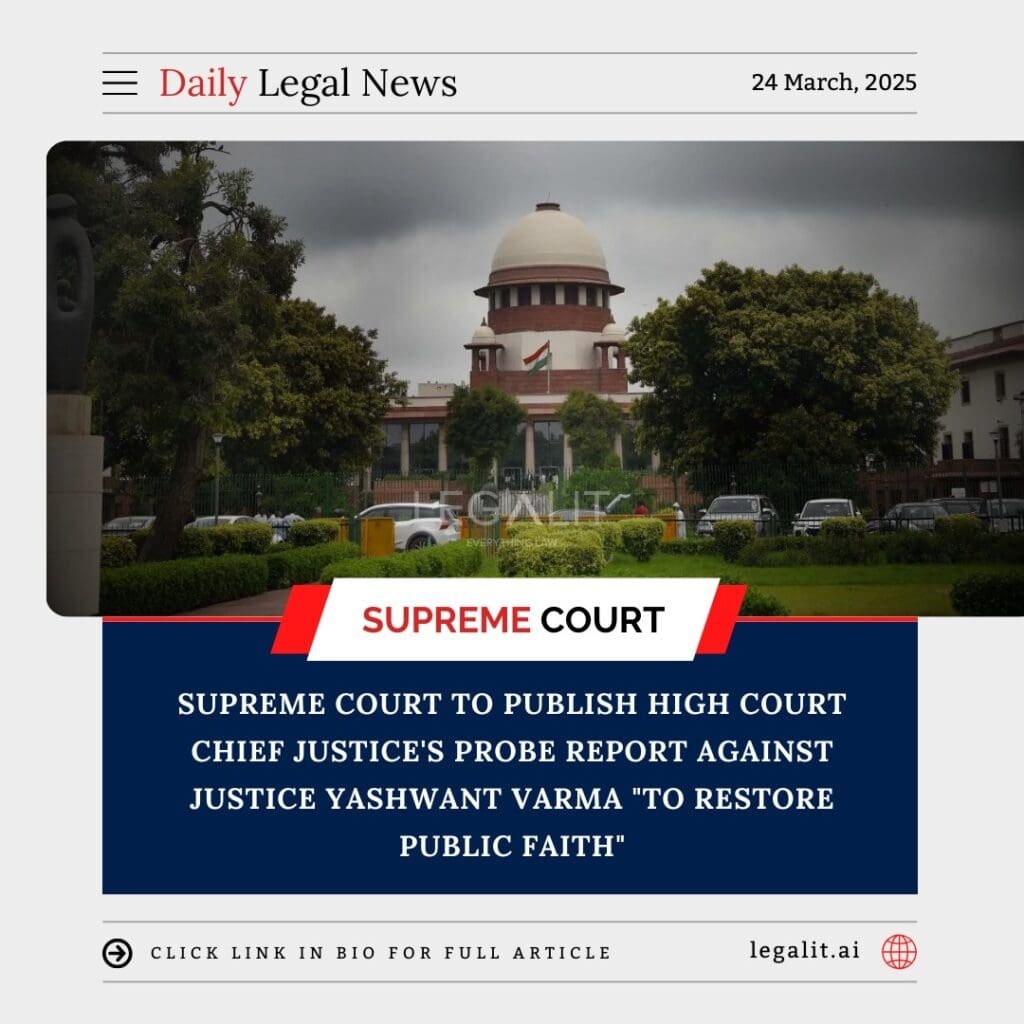
Background
The Supreme Court has decided to make public the inquiry report prepared by a High Court Chief Justice against Justice Yashwant Varma. This move comes amid concerns about transparency and public trust in the judiciary. The probe report was initiated following allegations against Justice Varma, which prompted an internal investigation to assess the validity of the claims.
Court’s Rationale
- Transparency and Public Confidence
- The Supreme Court emphasized that disclosing the inquiry report is essential to uphold public confidence in the judiciary.
- It underscored that the judiciary must not only be fair but also appear to be fair in the eyes of the public.
- Right to Information and Accountability
- The court recognized the public’s right to access information that affects judicial integrity.
- It stressed that withholding such reports could create doubts about the fairness of the legal system.
- Judicial Independence
- The bench clarified that while judicial independence is paramount, it must be balanced with the need for accountability.
- Publishing the report, the court held, would reinforce public faith in the judiciary’s ability to address allegations against its own members.
Existing Measures on Judicial Accountability
- In-House Procedure for Judges
- The Supreme Court follows an in-house procedure for investigating allegations against sitting judges.
- This procedure ensures that complaints are examined thoroughly while maintaining judicial independence.
- Public Access to Information
- Although judicial inquiries are typically confidential, the court can decide to disclose findings when public trust is at stake.
- Supreme Court Precedents
- Past rulings have affirmed the need for transparency when allegations against judicial officers raise questions about institutional integrity.
Implications of the Decision
- Increased Judicial Transparency
- The decision to publish the report sets a precedent for greater openness in handling judicial misconduct allegations.
- Public Trust and Confidence
- This move is expected to reinforce public faith in the judiciary’s willingness to self-regulate and address misconduct.
- Future Investigations
- The ruling may encourage more public disclosure of similar inquiries, promoting accountability without undermining judicial independence.
Conclusion
By choosing to publish the High Court Chief Justice’s inquiry report against Justice Yashwant Varma, the Supreme Court has reaffirmed its commitment to transparency and accountability. This landmark decision aims to restore and maintain public faith in the judiciary by ensuring that serious allegations are investigated and their outcomes made public.